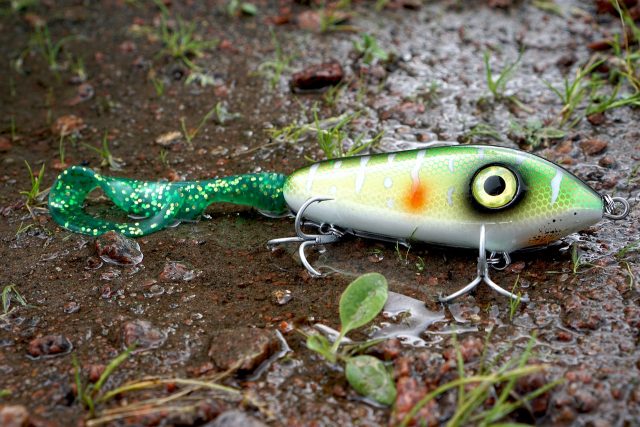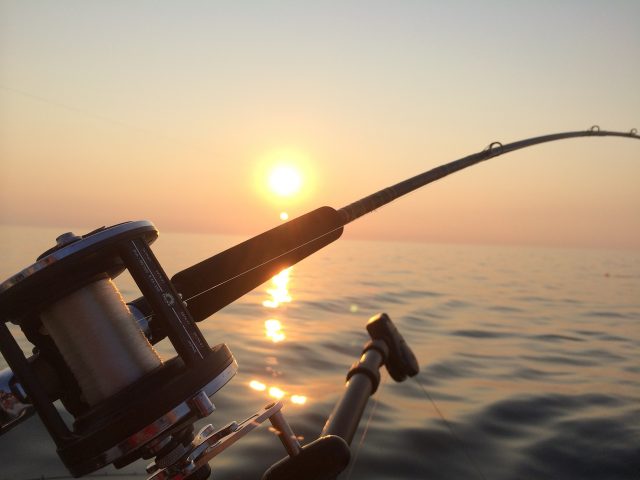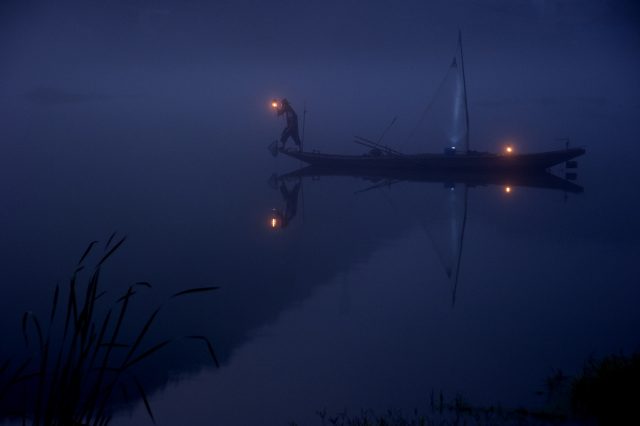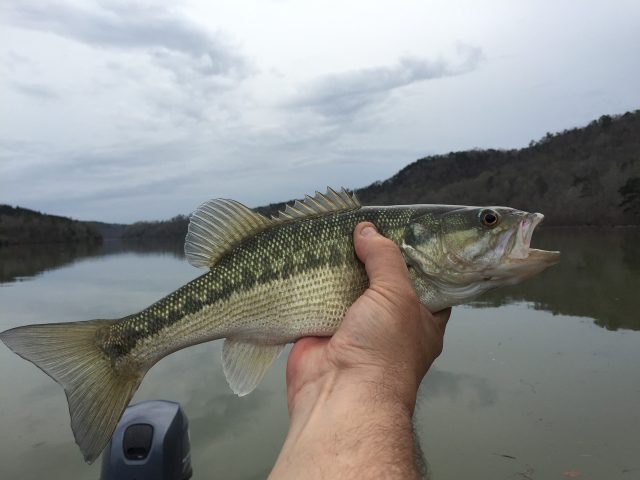Using topwater baits for bass fishing
Perhaps not the most famous of all fishing techniques, the surface lures or topwater lures are particularly effective methods of fishing among the more competent fishing enthusiasts. Topwater lures are especially useful when all other traditional lures fail. This is because topwater lures tend to attract bass fish which are hard to catch with other lures.
The topwater lure gives an impression of an easy and vulnerable prey, and the large bass loves an easy prey and would jump to the surface to catch it. This will result in an easy and often larger than usual catch. A number of different types of objects can be used as topwater lures, including plastic plugs or the much harder wooden ones. Other lures include soft objects with revolving blades to create a disturbance on the surface, alerting and attracting the fish.

The topwater lures are particularly favored by trophy hunters as these methods often produce much larger bass than when using a more traditional lure, which as well as bringing in a smaller catch on average, are also often time-consuming to set up. Plus, the catch with topwater lures is many times more exciting due to the fact that you can actually see the fish approaching and take your bait and, with luck, eventually end up in your hands.
The ideal time for an effective use of a topwater bass lure is during the summer season. However, it can also be fairly productive during spring and the beginning of fall. In cold waters where the bass is less likely to be aggressive, topwater lures are less likely to bring in a catch. The following is a list of favorable conditions for maximum yield with topwater lures.
Early mornings

Low light conditions are perfect for deploying your best topwater lures. If you can get up early and make your way to the edge of the water, you can easily end up with a whole bucket full in no time (it takes some time, but it is no time in comparison with other methods and times of the day). Stay around the shallow cover and you will find enough bass to offer your bait to, namely the hungry bass who move there for feeding. Throw your lures around a bush, stumps, logs, and rocks where the bass will normally be hunting for their early morning meal.
Dusk/Late afternoon
This is again based on the same principle: just like early mornings when the light is low, during the hours of the later afternoon going towards dusk, bass tends to come back to the shallow waters to end their day on a good meal. As soon as the shade starts covering banks, throw in your lures around shallow waters and wait for a hungry pod to take your bait.
Night Time

Dark hours are considered the best time for fishing using topwater lures, especially in the summer when water is much warmer, and bass feels secure when feeding in the dark. Expert anglers and lifelong bass enthusiasts are known to utilize the entire night fishing for bass. However, not many anglers are known to spend nights bass fishing, and most only focus on the early hours of the morning or just before sunset. It has always proven to be more productive if the topwater lure is a nice steady one as this allows the bass to clearly hone in on it.
Cloudy day
A sunny day with steady wind doesn’t often bring a catch as well as a gloomy, cloudy day. This is because a cloudy day gives the impression of early morning or dusk, and a school of fish under the guise of darkness will frequent shallow waters to feed, providing a perfect opportunity for the anglers to fill their bags.
A cloudy day, therefore, cannot ruin your plans for fishing. Simply place your baits, topwater or otherwise, and keep fishing as long as the bass keeps hitting them; you will definitely know when to stop.
Mayfly hatch time
When mayflies and other bugs start to hatch around the shallow water, a large number of bluegills are attracted toward this fresh food source. Bass follows the bluegills and feed on them until they have a bellyful of the baitfish. A popper, preferably of a smaller size, works great in this situation as it perfectly imitates the sucking sound that bluegills make while feeding on the bug or their eggs.
Poppers can be modified from a slower mode to very fast. This obviously depends on what bass want so always work your way up from slow to fast. Sometimes, a still popper also works well as it gives the impression of an easy meal, and bass loves an easy, vulnerable prey.
While bass are schooling
If you happen to fish in the open waters, keep in mind that bass almost always chases baitfish when in the open waters. This behavior in fish is known as ‘schooling’. If you place your topwater lure in open waters, this gives an impression of a bass chasing a baitfish or, even better, devouring one.

In more open waters bass are aggressive and are greedy by nature, and they will often snatch prey from another bass. This means that there is a possibility of catching more than one greedy bass on a single lure.
If you have any comments then please drop us a message on our Outdoor Revival Facebook page
If you have a good story to tell or blog let us know about it on our FB page, we’re also happy for article or review submissions, we’d love to hear from you.
We live in a beautiful world, get out there and enjoy it. Outdoor Revival – Reconnecting us all with the Outdoors.





